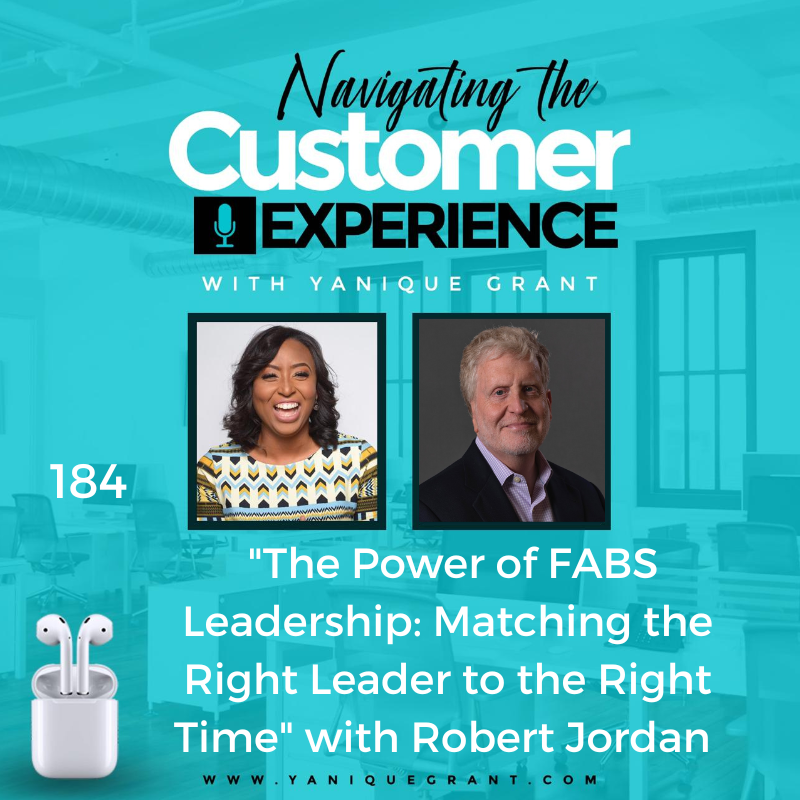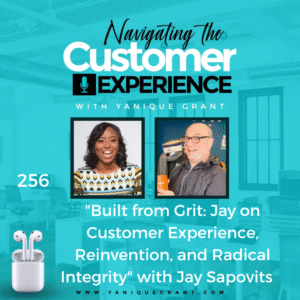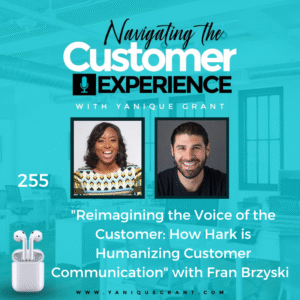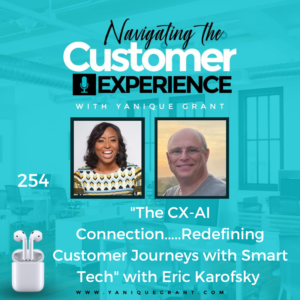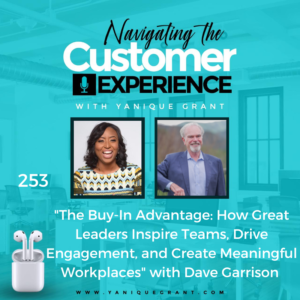Robert Jordan is the CEO of InterimExecs, which matches top executives with companies around the world. Based on research with thousands of leaders and companies, he and co-founder Olivia Wagner wrote Right Leader, Right Time: Discover Your Leadership Style for a Winning Career and Company, and they’ve launched the FABS Leadership Assessment, a free assessment at RightLeader.com designed to help leaders and organizations perform better.
Jordan also authored How They Did It: Billion Dollar Insights from the Heart of America and help plug publishStart With No, Jim Camp’s bestseller on negotiation.
Questions
• Now, we always like to give our guests an opportunity, especially guests that we’ve been interviewing for the very first time a little bit for you to share in your own words about your journey and how you got to where you are today.
• Could you take some time to share with our listeners a little bit about the book Right Leader Right, Time, just some of the core things that the book talks about?
• Now, do you believe that there’s any examples globally, of a leader who embodies each of the four leadership styles that we would have just looked at the fixer, the artist, the builder, the strategist?
• Could you give me one example for each leadership style that our listener could take away, maybe a practical activity that they could do or something that they could do to strengthen them to be a better fixer, a better artist, builder or strategist?
• Could you share with us what’s the one online resource, tool, website or app that you absolutely can’t live without in your business?
• Could you also share with our listeners, maybe one or two books that have had the biggest impact on you? It could be a book that you read a very long time ago, or even one that you read recently?
• Could you also share with us what’s the one thing that’s going on in your life right now that you’re really excited about? Either something you’re working on to develop yourself or your people.
• Could you share with our listeners where can they find you online?
• Now, before we wrap our episodes up, we always like to ask our guests, do you have a quote or a saying that during times of adversity or challenge, you’ll tend to revert to this quote? It kind of helps to get you back on track if for any reason you got derailed?
Highlights
Robert’s Journey
Robert shared that in some ways, he’s your classic entrepreneur. He was in graduate school, but he was not the greatest student and dropped out to start a publishing company and started the first magazine in the world that covered online services and then the internet.
And in the beginning, he made every mistake you could make in business. But eventually, of course, the internet came around, the worldwide web and then he could do no wrong and the business grew very fast to put him on to the Inc. 500 list of the fastest growing businesses in the US. So, that was his first company.
And then he kind of fell into a very weird job title. He was an interim CEO for a number of technology companies, mostly early stage and that led to forming an organization called InterimExecs and he gather they’re going to get into this because at InterimExecs, they had about 7000 executives show up who wanted to be placed, they’re a matchmaker around the world in organizations that need leadership, and fractional or interim executives. And so, from that, they also wrote the book just referred Right Leader, Right Time.
Me: Amazing. So, this book was published in 2022.
Robert stated yes, Right Leader, Right Time just came out.
About the Book – Right Leader, Right Time
Me: Could you take some time to share with our listeners a little bit about the book Right Leader, Right Time, just some of the core things that the book talks about?
Robert shared that when you’ve been asked something a long time, you can spot patterns, and with all these 1000s of executive showing up, they spotted a pattern which was not so good and then another pattern that was really good, and the not so good pattern was that the majority of executives were having career experiences, leadership journeys that you would describe as okay, but you wouldn’t say they were remarkable.
The flip side was that if you just looked at the top 2%, 3%, 4% of executives, they’re having exceptional careers and leadership journeys. And in that exceptional group, they saw 4 distinct styles of leadership, leadership style referring to somebody having a system or an approach or a process. And they gave them 4 labels, Fixer, Artist, Builder and Strategist.
Me: So, Fixer, let’s start with that one. Tell us a little bit about what are some of the key skills or competencies that you’d have to be considered in the fixer category.
Robert shared that Fixer is the energy, it’s the person that has to run into the burning building time after time. So, they’re not trying to pigeonhole any one person into one style, they think all leaders, they bring all their capabilities to bear. But fixer energy is this dominant kind of style that needs crisis. And for a fixer-oriented leader, it may take them 6 months, a year, 2 years to solve the client relationship, to fix a broken division.
When that is done, that person needs to move on to a new crisis. Does that give you a picture?
Me: It does. So, this could be applicable to any type of leader in any type of organization?
Robert shared that it could be, what they’re saying is that if you have dominant energy around fixer, it is best for you and for the organizations you’re with that most of the time – you need crisis, you need a hot mess. And if things are too stable, or going too well, as one of the leaders put it you’ll break it just so you can go fix it.
Me: It’s almost like you’re self-sabotaging because that’s how you perform, that’s how you’re at your best.
Robert stated that you need to be in those roles so if you look in the world today, as he and Yanique was talking, there’s a business called FTX, headquarter’s in the Bahamas and of the leading Crypto Exchanges, and it went bankrupt a few months ago, and the CEO who was appointed, who is a classic kind of fixer, because there are a million creditors and there’s alleged fraud. Well, that executive prior to FTX, he was at Enron, he was correcting Enron, he wasn’t the cause of the problems in Enron, but that’s his wiring.
Me: So, we have Fixers, those are the ones that are good at solving problems, and they need things to be broken in order to fix it. What about our Artists?
Robert shared that artist is the energy that sees the world as a blank canvas, or a piece of clay to be molded. So, you think about right now a leader like Elon Musk, he is driven by his innovative ability. Historically, you look at someone like Thomas Edison, or Steve Jobs. This is that kind of creative drive coming out.
Artist energy though, the way they put it in the book is sometimes it’s at that leader’s peril. And he’s strongly worried with artist energy and he gets that, which is to say you can’t stop thinking up ideas, that doesn’t mean they’re all going to come to fruition, they’re all going to be great, they’re all going to be operationally terrific, which is why you need a mix of styles around you.
Me: Agreed. It’s almost like that book by John Maxwell, How Successful People Think and there is a thinking activity that he does in there that has a different thinking styles. So, you have big picture thinker, focused thinker, creative thinker. And in order for an organization to really function at its best, you need a blended approach in terms of people’s thinking style versus just all of your team members thinking in a particular way.
Robert agreed. Absolutely right. And one of the things exceptional leaders do better is they’re better at collaboration. All of us talk about it, and he thinks everyone thinks they’re good at it, the problem is that if you’re not really confident and directed in your own style, it’s less likely that you’re actually effectively collaborating with everyone else.
Because the primary thing they saw in this average of leaders who were having okay career experiences, but not great. The primary flaw was attempting to be all things to all people, it never works but it is the thing that a lot of people do knowingly or unknowingly.
Me: Yeah, that is crazy. So, we looked at the Fixers, the Artists, what about the Builders?
Robert shared that everyone in organization loves to be a builder, they get that. They mean something specific here with builder, which is the energy that can take the small, the nascent product, service, team, client relationships, and take it to market domination.
So, you can think of, for example, someone who creates a new technology, and it grows fast, and they have an IPO, that’s builder energy. What you tend to see with builder is that when that person has achieved an IPO or has achieved market domination, in many cases, they need to move to a new company, a new division, a new product, new client relationships, because they need the challenge of taking something small and getting to market domination.
Me: All right. And then we have our Strategist. And it’s funny, but would you say that most people believe that in order for you to be a great leader, you need to be an excellent strategist because business is all about the strategy and executing that strategy?
Robert shared that it’s a good question. And all leaders have to be good at strategy, strategy, he would say with a small s, the leader label strategist, we could have called pilot, conductor, captain, quarterback, it’s referring to the kind of energy that excels within large vast or complex organization, the kind of language that strategists leaders use, it’s around loyalty, and being mentored and mentoring other people. It’s about longevity, typically within one organization, it’s being cross trained, it’s about gratitude to an organization. And that kind of language, you’re just not going to hear that from typical Fixer, Artist or Builder leaders.
Leaders Who Embodies the Four Leadership Styles – Fixer, Artist, Builder and Strategist
Me: Now, do you believe that there’s any examples globally, of a leader who embodies each of the four leadership styles that we would have just looked at the Fixer, the Artist, the Builder, the Strategist?
Robert stated that that’s a good question. So, when we’re talking about Fixer, John Ray, who’s now the CEO of FTX, has a massive job to clean up FTX, it’s a disaster. The founder is now facing all kinds of criminal charges and there’s funds missing and that would be fixer energy. And as they said, he had been at Enron before.
An example of Artist, Elon Musk is a good example. If you think about any friend of yours, and they’re highly creative on the team, they may be the renegade, they’re the rebel. They’re not necessarily the most popular, but they’re the one that’s capable of these discontinuous leaps for companies, and it’s absolutely the energy that a stagnant company needs, that’s the artist builder.
So, if your listeners are familiar with Sheryl Sandberg, until recently, she was the number two at Facebook now known as Meta. Sheryl Sandberg’s, first 7 years at Facebook were phenomenal, she took an organization of a couple 100 employees. Facebook at the time was probably about $100 Million Dollars in revenue. Seven years later, there were 70,000 employees, it was $70 Billion Dollars in revenue, if that’s not the standout example of builder leader in the modern world, he doesn’t know what is.
Sheryl was also a cautionary example of what were one of the points they make in Right Leader Right Time because she ended up staying at Facebook, Meta for 14 years and what happened in the second 7 years, Cambridge analytical scandal, election scandals, the pivot to VR Meta which might not have suited her as well. Taking tonnes of arrows in the back for writing a best-selling book called Lean In.
And it’s a little cautionary because again, builder energy tends to be focused on market domination and once market domination has been achieved, that leader really kind of needs to move to a new company, new project, new division.
So, strategist leader, great example would be Fred Smith. He just retired from Federal Express, FedEx. He was there 51 years and most leaders, we think, it’s not like you have to round the basis, you don’t have to have tried everything. In the book, they’re fond of this phrase, highest and best use. And that is something we all aspire to as leaders to arrive at a point. There’s no arriving but kind of a Zen concept of coming to understand your highest and best use.
Fred Smith started FedEx as a paper he wrote while in college, that’s pretty innovative, artistic. He’s famous, he’s been interviewed many times. When he couldn’t meet payroll early on, he went to Las Vegas and gambled just to meet payroll and if that’s not fixer energy, he doesn’t know what is.
Builder, of course, to scale an organization like that was amazing. But he really arrived at a place of being one of the best strategist leaders of the modern era.
Me: Okay. So, we have some real-life practical examples that our listeners can definitely envision or even tap into because they’re a part of what we know. They’ve written books, we’ve seen their history to see what they’ve done so that they can really identify what the leadership styles are and what are the qualities that they embody.
Examples of Practical Activity To Strengthen Your Leadership Style
Me: Now, let’s say for example, you want to develop these skills or want to develop in these four areas. Could you give me one example for each leadership style that our listener could take away, maybe a practical activity that they could do or something that they could do to strengthen them to be a better Fixer, a better Artist, Builder or Strategist?
Robert stated that it’s a great question and one thing you also touched on earlier, they’ve launched atrightleader.com, a free 3 minute assessment is called FABS Leadership Assessment for any of your listeners who want to get a little bit of input and they’ll get a result after 3 minutes. And they’d also appreciate feedback to asked whether they got it right, how you’re labelled. But they’ll also get a free summary in terms of descriptions of each of the styles.
So, each one of the 4 is different. And it’s not a generic answer. So, for example, fixer energy, it tends to be the someone in organization, they’re smart, they’re hardworking, and someone around them throws a problem that nobody else could solve. And that’s how fixer energy tends to develop. And it is in the best interest of fixers, if they’re hooked and they solve that problem that no one else could solve, the best thing they can do is to seek out the next crisis. You have to pick yourself for these things.
Artist energy, they think, and they’re going to see how the research goes based on all the FABS Assessments being done, feels to them a little more like a mode that is internal to you that you cannot help. And what that energy needs within an organization is to be surrounded by people who are more operational. As a way of kind of protecting the ability to keep on doing it.
Builder is an energy in a way similar to fixer, it’s more linear. A fixer tends to only work on one problem, one company, one crisis at a time, or put it this way. If you have a friend and they say they’re a great fixer, but they’re trying to put out fires at the three companies at a time, that’s not a great fixer, that’s probably not going to work. The opposite is you have a friend and they’re strongly artists energy, very renegade, rebellious, they need multiple canvases to paint on at the same time. It’s not an accident that Elon Musk has SpaceX, Teslaand The Boring Company at the same time.
He’s also a cautionary example because as he and Yanique are talking, he still has Twitter and Twitter was not his classic playbook, Twitter was a broken or maybe he contributed to making it a broken organization and he’s using a playbook there and there’s no other fixer on the planet that gets to do what he does. It doesn’t tend to work well.
But builder energy, what that person needs is to put themselves into situations of maybe not unproven product services, companies technologies, but something that has not yet reached scale, has not reached domination, they need to be in the position of where they’re helping the product, the people, the process, the team to grow, their putting system and process in place.
And strategist, strategist just needs to be within an organization where cross training and mentorship are going to be those components. So, those are some of the things that people should be aware of, that the overriding thing that they would say is that in observing exceptional leaders, they tend to reject more of what is not for their highest and best use.
They reject more of what’s not for their highest and best use. And so, it’s easy to say, and it’s very hard to do, very hard to do. But that’s the thing on your career journey is, as you’re going along that you become more and more intentional. Your first job, you need the money, you need the direction, your family is looking at you and you can’t refuse anything. But what happens over time, as you discover what you like, and what you don’t like is you start gravitating in one place or one direction over another, you start making more and more intentional decisions. And decision comes from the Latin word, meaning to kill off. And you have to do that with options that are not right for you, as you got to kill them off. That’s very hard because we live in a time of FOMO, the fear of missing out.
Me: Agreed. And, just listening to you speak and explaining that. I’ve definitely seen my career grow in that way as well, in terms of being more intentional about the jobs that I take, or things that I invest my time into and the ones as you mentioned that don’t serve me, I tend to not get involved in, maybe 10-15 years ago, my decision would have been completely different.
Robert agreed. Exactly and hindsight is 2020, it’s hard to see at the beginning of your career, it’s just easier when you look back. And so, that’s the thing to kind of inform where you are now and where you want to go is to look at your journey and not to judge it, just to observe it. No judgement…..just observation.
App, Website or Tool that Robert Absolutely Can’t Live Without in His Business
When asked about an online resource that he cannot live without in his business, Robert shared that it’s an obscure one but he’s on the road a lot and he has to send people PDFs and so he uses a TurboPDF app.
Books that Have Had the Biggest Impact on Robert
When asked about books that have had the biggest impact, Robert stated that he’ll share two books, one is personal bias, because he was involved with it. Yanique mentioned it, Start With No: The Negotiating Tools that the Pros Don’t Want You to Know by Jim Camp. It’s one of the foundational books on how to be a better negotiator. And they think is something that just stands everybody well, because the foundation of that book is understanding your own mission and purpose. And the clearer you get on that you start getting clear on how it is that you’re negotiating with other people and to have a sense of mission and purpose in those negotiations.
The other book is more recent, it’s a book called The Second Mountain: The Quest for a Moral Life by David Brooks. And if you consider first mountain, are the things you do in career that are about money and power and status, fame, whatever. More of the earning your living, as opposed to second mountain, which is when you’re going for significance. What is it that you are called to? What are you committed to? He thought that that was pretty powerful.
What Robert is Really Excited About Now!
When asked about something that is going on right now that he’s really excited about, Robert shared that that’s a great question. He has to go back, this assessment has them really energized because they would just love to see what happens as more and more people take it. We are recording this, and it’s very new, it just came out and only about 1000 people have taken it so far. So, they’re putting forward a lot of ideas here and they may be wrong or right about them, they’re going to see as all of the data comes back in how it plays.
Where Can We Find Robert Online
Website – InterimExecs.com
Quote or Saying that During Times of Adversity Robert Uses
When asked about a quote or saying that he tends to revert to, Robert stated that that’s such a good question. “I fairly sizzle with zeal and enthusiasm as I spring forth with a mighty faith to do the things that ought to be done by me.”
Robert shared that’s a recording he heard many years ago, a Minister named Jack Boland and he was quoting his mentor. I can’t remember the name of his mentor. But he said that on a number of recordings, and it just hit him between the eyes.
And so, in his spare time he paints, and he actually painted a Canvas at one point with that expression, because it just energizes me.
Please connect with us on Twitter @navigatingcx and also join our Private Facebook Community – Navigating the Customer Experience and listen to our FB Lives weekly with a new guest
Links
· How They Did It: Billion Dollar Insights from the Heart of America by Robert Jordan
· Start with No: The Negotiating Tools that the Pros Don’t Want You to Know by Jim Camp
· The Second Mountain: The Quest for a Moral Life by David Brooks
Grab the Freebie on Our Website – TOP 10 Online Business Resources for Small Business Owners
The ABC’s of Fantastic Customer Experience
Do you want to pivot your online customer experience and build loyalty – get a copy of “The ABC’s of a Fantastic Customer Experience.”
The ABC’s of a Fantastic Customer Experience provides 26 easy to follow steps and techniques that helps your business to achieve success and build brand loyalty.
This Guide to Limitless, Happy and Loyal Customers will help you to strengthen your service delivery, enhance your knowledge and appreciation of the customer experience and provide tips and practical strategies that you can start implementing immediately!
This book will develop your customer service skills and sharpen your attention to detail when serving others.
Master your customer experience and develop those knock your socks off techniques that will lead to lifetime customers. Your customers will only want to work with your business and it will be your brand differentiator. It will lead to recruiters to seek you out by providing practical examples on how to deliver a winning customer service experience!
Our Next Webinar – May 16, 2023 at 10:00 am


